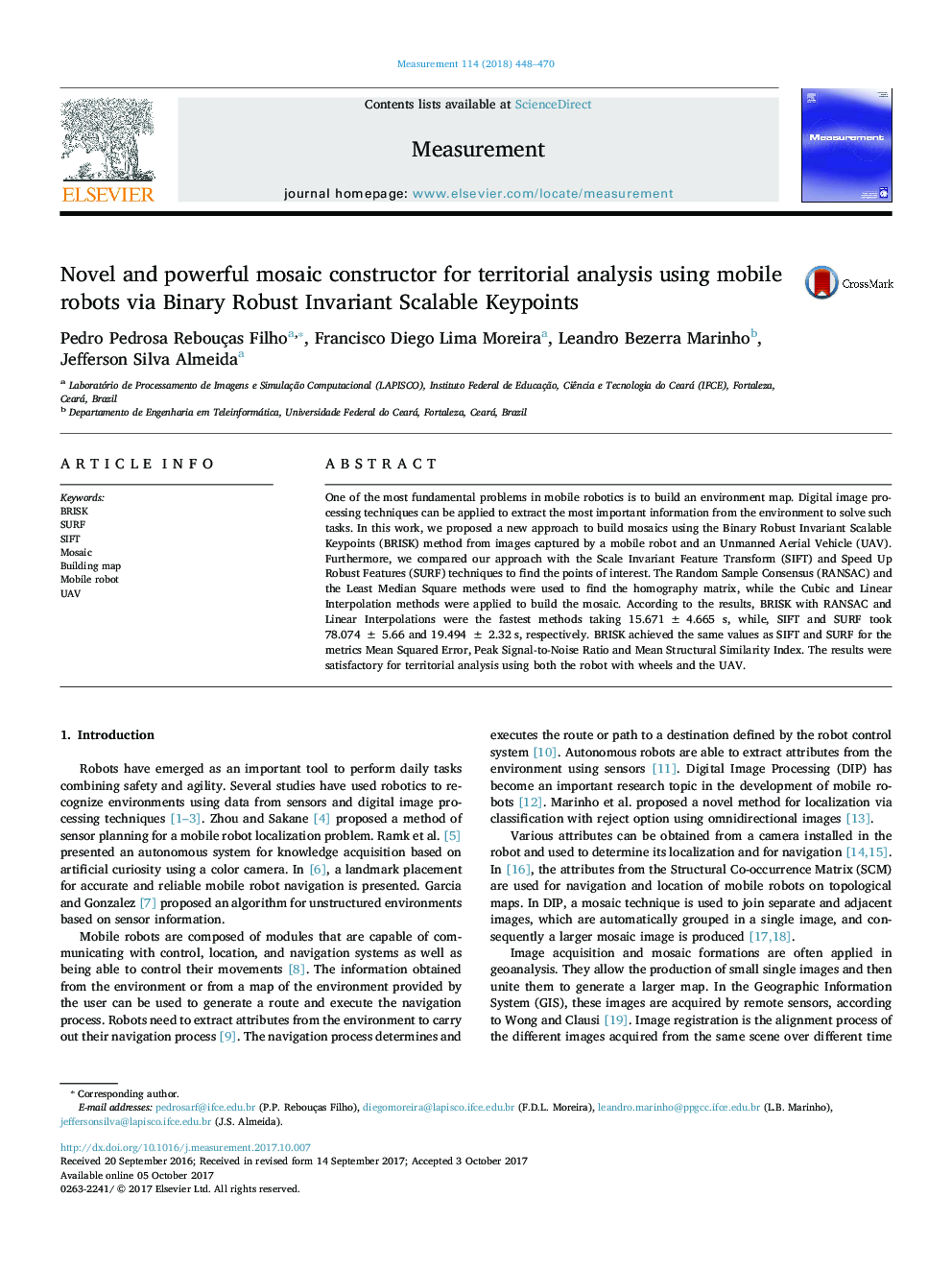| Article ID | Journal | Published Year | Pages | File Type |
|---|---|---|---|---|
| 5006339 | Measurement | 2018 | 23 Pages |
Abstract
One of the most fundamental problems in mobile robotics is to build an environment map. Digital image processing techniques can be applied to extract the most important information from the environment to solve such tasks. In this work, we proposed a new approach to build mosaics using the Binary Robust Invariant Scalable Keypoints (BRISK) method from images captured by a mobile robot and an Unmanned Aerial Vehicle (UAV). Furthermore, we compared our approach with the Scale Invariant Feature Transform (SIFT) and Speed Up Robust Features (SURF) techniques to find the points of interest. The Random Sample Consensus (RANSAC) and the Least Median Square methods were used to find the homography matrix, while the Cubic and Linear Interpolation methods were applied to build the mosaic. According to the results, BRISK with RANSAC and Linear Interpolations were the fastest methods taking 15.671 ± 4.665 s, while, SIFT and SURF took 78.074 ± 5.66 and 19.494 ± 2.32 s, respectively. BRISK achieved the same values as SIFT and SURF for the metrics Mean Squared Error, Peak Signal-to-Noise Ratio and Mean Structural Similarity Index. The results were satisfactory for territorial analysis using both the robot with wheels and the UAV.
Keywords
Related Topics
Physical Sciences and Engineering
Engineering
Control and Systems Engineering
Authors
Pedro Pedrosa Rebouças Filho, Francisco Diego Lima Moreira, Leandro Bezerra Marinho, Jefferson Silva Almeida,
